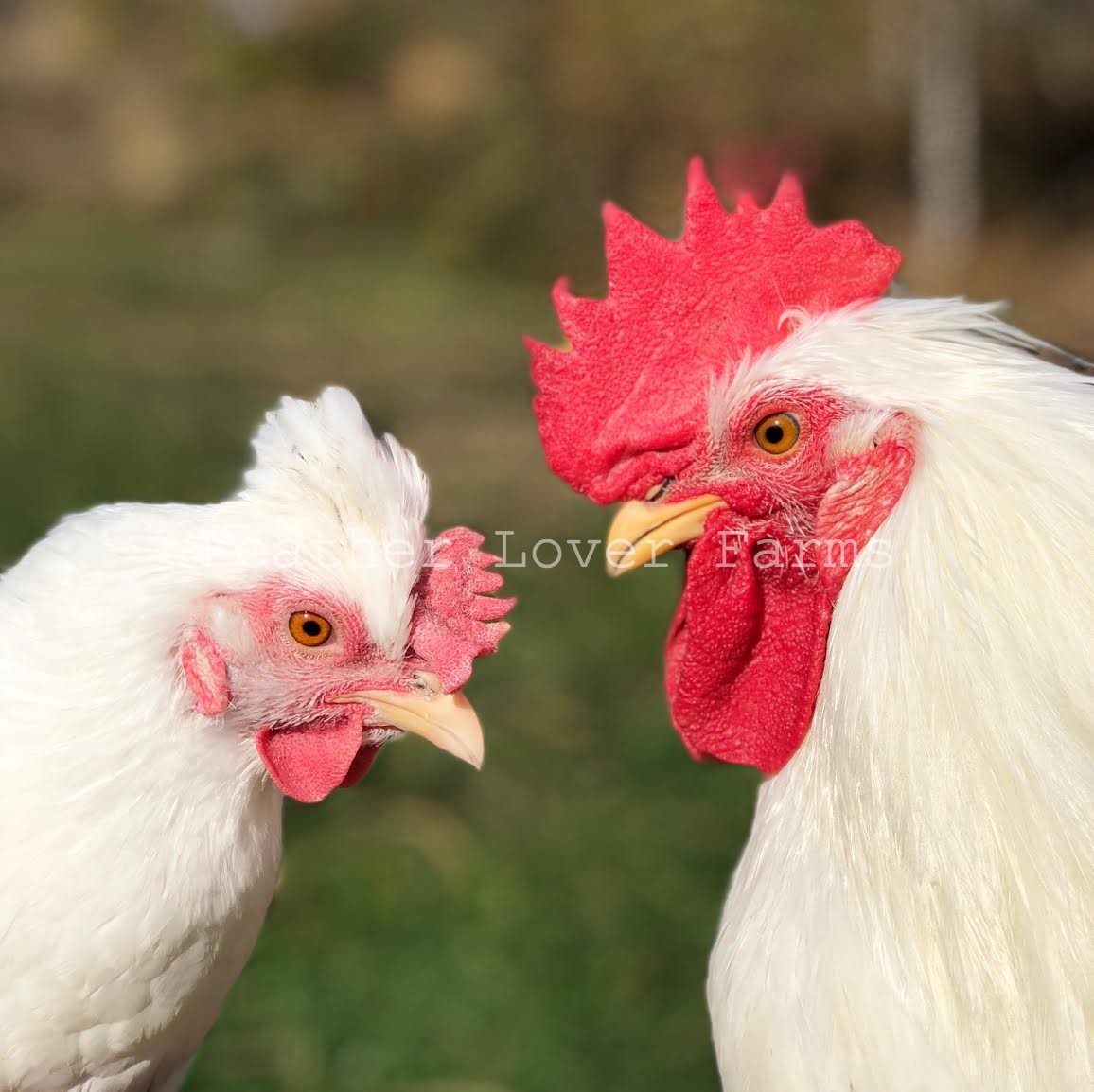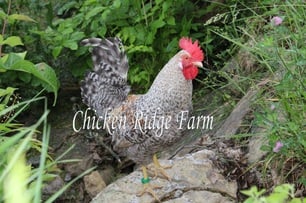This is my first time with Cream Legbars. I am by no means a poultry expert, so I apologize in advance if my theory sounds foolish to any experienced breeder. Nevertheless after witnessing this in my own backyard, I feel this is something that needs to be addressed, just in case this hints at something more.
Of the two CCL hens that I possess, one has a big crest, the other has a small crest. At one point during wintertime, temps in my non-heated coop went below -10°C/14°F with +75% humidity, and to protect my chickens against the cold I put the whole flock under Vaseline. The results were worse rather than better. Of the victims, my small-crested pullet's comb caught frostbite. My big-crested pullet, of the same bloodline as her sister, had no such problems.
I waved the matter off as a difference of resilience, because some birds are just born better fit to fight off the cold than others. It happens all the time. But the thought nagged at me as the months passed: what if my big-crested pullet evaded comb frostbite specifically because her bigger crest protected her comb better against the cold and humidity than her sister's smaller crest?
Here's some pictures for visuals and comparison:
This is Lucy, the poor frostbitten sweetheart who now sports four spikes rather than six: small wattles, damaged single comb and a small crest.

And here's my miracle hen, Duchesse: small wattles, medium-sized single comb and a big crest.

Common sense says Cream Legbars are all vulnerable to comb frostbite, regardless of crest size. But if small-crested Cream Legbars are more susceptible to comb frostbite than big-crested Cream Legbars, then big crests might be an advantage to consider in colder regions. The question is, am I the only one who has witnessed this big versus small contrast, or have others seen it as well in their own backyards regardless of where they are on the globe?
If anyone has at one point seen a frostbitten CCL and remembers the bird(s)'s crest size, please don't hesitate to speak up, it'd be nice to shed light on this mystery together!
(**Note: Since the Crested Cream Legbar does not yet have an official APA recognized SOP, I thought it more appropriate to post this thread in the General Breed section rather than the Exhibition, Genetics and Breeding to the SOP section. If mods feel this topic is better discussed in the EGBS section, I will post it there.)
Of the two CCL hens that I possess, one has a big crest, the other has a small crest. At one point during wintertime, temps in my non-heated coop went below -10°C/14°F with +75% humidity, and to protect my chickens against the cold I put the whole flock under Vaseline. The results were worse rather than better. Of the victims, my small-crested pullet's comb caught frostbite. My big-crested pullet, of the same bloodline as her sister, had no such problems.
I waved the matter off as a difference of resilience, because some birds are just born better fit to fight off the cold than others. It happens all the time. But the thought nagged at me as the months passed: what if my big-crested pullet evaded comb frostbite specifically because her bigger crest protected her comb better against the cold and humidity than her sister's smaller crest?
Here's some pictures for visuals and comparison:
This is Lucy, the poor frostbitten sweetheart who now sports four spikes rather than six: small wattles, damaged single comb and a small crest.
And here's my miracle hen, Duchesse: small wattles, medium-sized single comb and a big crest.
Common sense says Cream Legbars are all vulnerable to comb frostbite, regardless of crest size. But if small-crested Cream Legbars are more susceptible to comb frostbite than big-crested Cream Legbars, then big crests might be an advantage to consider in colder regions. The question is, am I the only one who has witnessed this big versus small contrast, or have others seen it as well in their own backyards regardless of where they are on the globe?
If anyone has at one point seen a frostbitten CCL and remembers the bird(s)'s crest size, please don't hesitate to speak up, it'd be nice to shed light on this mystery together!
(**Note: Since the Crested Cream Legbar does not yet have an official APA recognized SOP, I thought it more appropriate to post this thread in the General Breed section rather than the Exhibition, Genetics and Breeding to the SOP section. If mods feel this topic is better discussed in the EGBS section, I will post it there.)
Last edited:








